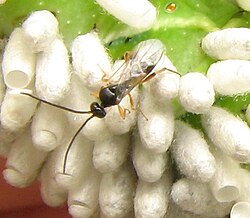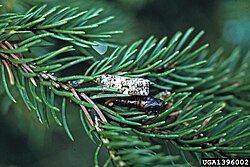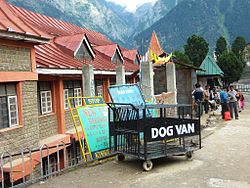Crop protection

Crop protection is a branch of horticulture, aimed at protecting crops. This is done so that the yield of the crop does not diminish. Common approaches are:
- Using pesticides, these are on a chemical basis
- Using biological pest control, using the natural enemies of the pests to control them.
- Using barriers, such as net[disambiguation needed]s
- Using psychology, for example to scare birds
- Using biotechnology, selective breeding and genetic engineering
Crop Protection Media
An agricultural aircraft applies low-insecticide bait against western corn rootworm.
Red weaver ants, here feeding on a snail, have been used to control pests in China, Southeast Asia, and Africa for many centuries.
Sign in Ilfracombe, England designed to help control seagull presence
Biological pest control: parasitoid wasp (Cotesia congregata) adult with pupal cocoons on its host, a tobacco hornworm Manduca sexta (green background)
Cultivation by ploughing exposes insect pests to predators such as black-headed gulls.
Spruce budworm (adult and pupa shown), a serious pest of forests, can be monitored using pheromone traps.
A contemporary wood engraving of varmint hunters shooting passenger pigeons, a varmint species that was known to damage crops. Overhunting resulted in complete extinction of the species.
Dog control van, Rekong Peo, Himachal Pradesh, India








